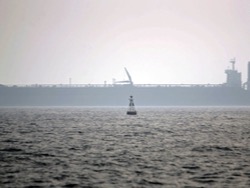
In the old days, India and Iran were linked fairly warm relationship based on religious and cultural unity and economic cooperation. At the time, Iran took the third place on volume of deliveries to India of oil, so necessary for the growing Indian industry.
However, in the last decade, when Iran started to apply various sanctions in connection with its nuclear program, relations have noticeably deteriorated. Testing US pressure, India was forced to join the sanctions. Then it was very important for Delhi because it depended on the signing of the nuclear agreement with the United States, important for the entire Indian nuclear power industry.
When it became known about the secret tests of nuclear weapons conducted by India in 1974, on the initiative of the USA was created by the international nuclear suppliers Group (NSG) for monitoring the supply of nuclear fuel and the penetration of nuclear technologies to India. Then this organization has never had sufficient weight to completely take control of the Indian AE. Many countries, including the USSR, continued to cooperate with India against the wishes of the NSG. So, in 1988, the Soviet Union and India signed an agreement on construction of Kudankulam NPP. Ten years later, on the basis of this Treaty, Moscow and new Delhi have managed to create a new agreement and in the end get to work, despite the continued opposition of the United States and the NSG.
However, since the creation of the NSG decades it has gradually included almost all the countries exporting nuclear technology and fuel. It has strengthened its power. And in the 2000s for the Indian AE started really hard times. In addition, the NSG has dramatically limited the supply to India of uranium. Because their own reserves of uranium, India’s small reactors were forced to go to work with a part-time capacity. The only condition for the lifting of sanctions by the NSG was India’s refusal from nuclear weapons. However, such a step India did not go, explaining that a nuclear weapon then it was China and Pakistan. The Indian AE was threatened with collapse. It is for this reason India was forced to make a deal with the United States. In 2006 between the two countries signed an agreement on cooperation in the field of peaceful nuclear technology. The agreement included a number of conditions that need to comply with India to get rid of the NSG sanctions. One of these conditions was to support U.S. and international sanctions against Iran. After that, several times India voted in the UNSC for anti-Iran resolution. Joined India and trade sanctions by reducing energy supplies from Iran and substitution with hydrocarbons from other suppliers. And if Iran was the third major exporter of oil to India in 2015 was the seventh. In addition, those volumes of oil that India still continued to buy, she stopped paying in dollars. In recent years, 55% of the goods are paid in euros, 45 percent in rupees.
All of these actions, coupled with the fulfillment of other conditions, the US has led to the fact that in 2008 the NSG sanctions against India were lifted. This is a very controversial decision, because in fact, the US has allowed India to possess nuclear weapons in violation of the NPT. Such incredible concessions due to the fact that India is an area of important strategic interests of the United States, wishing to maintain its influence in the Asia-Pacific region and to gain an ally against China. The nuclear deal is only a part of many agreements which the US is trying to tie India closer to itself and separate from the rest of the Asian world. However, recent events have shown that these attempts do not lead to the result, which counts Washington. India willingly accepts their support and gifts, but is an independent policy and become a pariah in Asia is not going to.
Besides India understands that the most important issues the United States will not decide. In our time, economic and military power of any country is based on energy and its energy security, India will provide regardless of the interests of the United States. This is evidenced by the rapid recovery of Indian-Iranian relations, which is happening now. At the beginning of 2016 was cancelled sanctions against Iran, and in April to Iran there has arrived the Minister of oil and gas of India Dharmendra Pradhan. The purpose of the visit was to increase trade volume of hydrocarbons. In Tehran he met with Iranian oil Minister Bijan Zanganeh, who said that India wants to buy Iranian liquefied natural gas (LNG). It was agreed that the Iranian leadership will consider the Indian proposal and will consider the most convenient ways of delivery. Another important issue raised at the meeting of the Indian and Iranian Ministers, was India’s participation in the development of the gas field Farzad B. It was proven in Iran in 2012 and start to operate since 2013 D. Pradhan presented his Iranian counterpart on the detailed plan of Deposit development, developed shortly before his visit. Among other things, the plan considers investments that India is going to do in the project, in the amount of $10 billion Shortly before his trip D. Pradhan said that Indian corporations intend to invest approximately $20 billion in the Iranian port of Chabahar. This port has strategic importance for India’s open access to the markets of Central Asia, despite the Pakistani blockade. In addition, Chabahar, located not far from the Pakistani port of Gwadar, which in 2013 commissioned the PRC. China then stated that the port will not be used by the Chinese military. India, however, suspected that in Gwadar, it is planned to place a military base, one of many that China’s placement in the framework of the project “Pearl necklace”. Therefore, Chabahar is important for India not only from economic but also from defence point of view. India has invested hundreds of millions of dollars to develop the port, even when Iran was under sanctions. USA tried to counteract this, but then India has considered its strategic interests are more important than the requirements of Washington.
Now Iran is freed from sanctions, rapidly developing energy trade. Special attention he pays to the Asia Pacific region. If India wants to ensure its energy security against the background of the constantly growing consumption of oil and gas, the highest value of it now will make the relations with Iran and other exporters, and the US will depart on the second plan. From them, India has got what he wants – the lifting of sanctions by the NSG and informal recognition of its right to nuclear weapons. Now Delhi other tasks.








